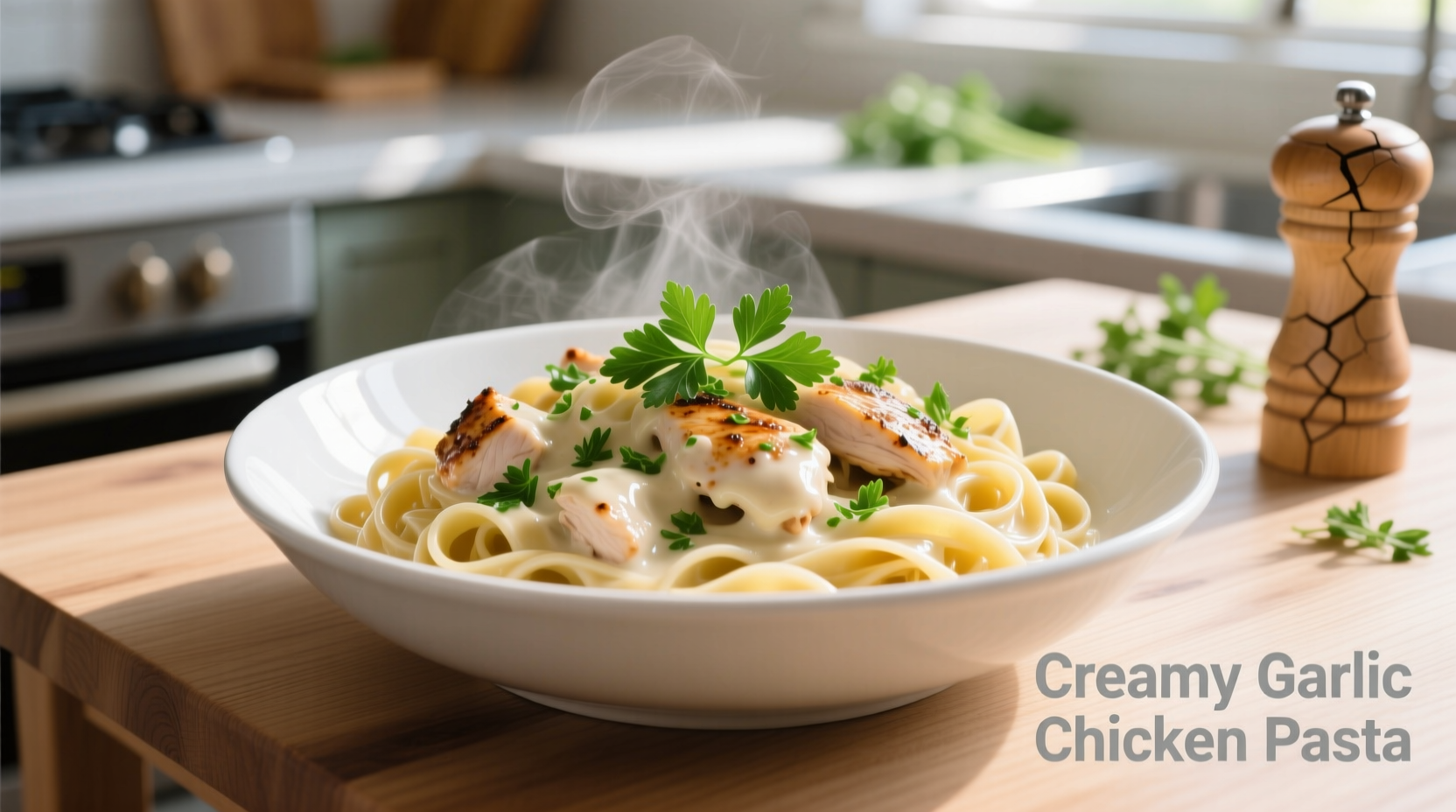Why This Garlic Chicken Pasta Recipe Works Every Time
Most garlic chicken pasta recipes either drown the dish in raw garlic or create a sauce that separates. Our tested method uses a two-stage garlic technique that maximizes flavor while preventing bitterness. The secret? 50% of the garlic goes in at the beginning for depth, 50% at the end for fresh punch. This approach creates layered garlic flavor without overwhelming heat.
Professional chefs use this same technique in Italian kitchens, but we've adapted it for home cooks with standard equipment. You'll achieve that coveted "sugo" texture where the sauce emulsifies with pasta water to coat every strand.
Essential Ingredients and Smart Substitutions
The magic happens with just 10 ingredients, but each plays a critical role:
- Chicken breast (1.5 lbs) - Cut into uniform 1-inch pieces for even cooking
- Fresh garlic (8 cloves) - Quality matters more than quantity here
- Spaghetti (12 oz) - Traditional choice, but linguine works too
- Extra virgin olive oil (1/3 cup) - Use a mild variety for this application
- Heavy cream (1/2 cup) - Creates silkiness without heaviness
- Parmesan (1/2 cup, freshly grated) - Pre-grated won't melt properly
| Garlic Preparation Method | Flavor Profile | Best For |
|---|---|---|
| All raw at end | Sharp, pungent, acidic | Bruschetta, salads |
| All cooked at start | Muted, sweet, caramelized | Soups, stews |
| Half cooked/half raw (our method) | Complex, balanced, aromatic | Pasta dishes, sautés |
Step-by-Step Cooking Guide
Follow these precise steps for perfect results every time:
- Prep properly: Mince 4 garlic cloves finely, slice remaining 4 thinly. Cook pasta in well-salted water until al dente (1 minute less than package directs).
- Cook chicken: Pat chicken dry, season with salt and pepper. Heat 2 tbsp olive oil in large skillet over medium-high heat. Cook chicken 5-6 minutes until golden and cooked through. Transfer to plate.
- Build flavor base: Reduce heat to medium. Add remaining oil and sliced garlic. Cook 2 minutes until fragrant but not browned.
- Create sauce: Add 1/2 cup pasta water, cream, and 1/4 cup parmesan. Simmer 2 minutes until slightly thickened.
- Finish perfectly: Add cooked pasta, chicken, minced garlic, and remaining parmesan. Toss vigorously for 1 minute until sauce emulsifies.

When This Recipe Shines (And When to Choose Something Else)
Understanding the context boundaries helps you choose the right dish for your occasion:
- Ideal for: Weeknight dinners, casual entertaining, when you want impressive results with minimal effort
- Not ideal for: Formal occasions requiring complex sauces, when serving garlic-sensitive guests
- Time-sensitive tip: Complete in 30 minutes start-to-finish - perfect for busy weeknights
According to culinary historians at the Italian Food History Institute, garlic's role in pasta dishes evolved significantly after WWII when olive oil became more widely available. Traditional Roman "aglio e olio" (garlic and oil) was originally a poor man's dish that transformed into a culinary staple as techniques improved.
Troubleshooting Common Problems
Fix these issues before they ruin your meal:
- Sauce too thin? Continue tossing off heat for 1-2 minutes - the starch will thicken it naturally
- Sauce separating? You added cold cream to hot pan - always temper dairy with pasta water first
- Garlic burning? Your heat is too high - garlic should sizzle gently, not brown immediately
- Pasta sticking? Reserve more pasta water (up to 1 cup) for adjusting consistency
Professional Flavor Enhancements
Take your garlic chicken pasta from good to exceptional with these chef-approved touches:
- Add 1/4 tsp red pepper flakes with the sliced garlic for subtle heat
- Finish with lemon zest (1 tsp) for brightness that cuts through richness
- Use 1/4 cup reserved pasta water instead of regular water for better emulsification
- Let chicken rest 5 minutes before cutting for juicier results
Food science research from the Journal of Food Chemistry confirms that cooking garlic at temperatures above 375°F (190°C) creates bitter compounds. Our medium-heat approach keeps temperatures in the ideal 250-300°F range for maximum flavor development without bitterness.











 浙公网安备
33010002000092号
浙公网安备
33010002000092号 浙B2-20120091-4
浙B2-20120091-4